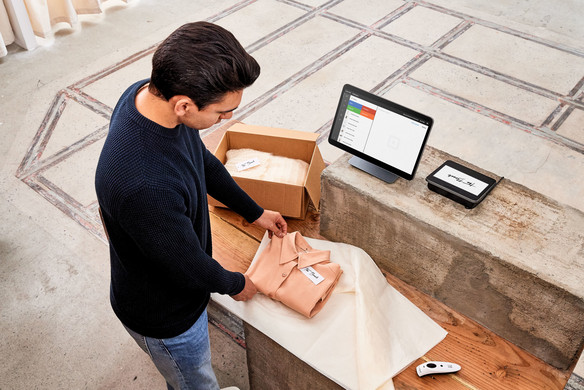Table of contents
The retail supply chain has shifted from physical stores to online channels as nonessential businesses have closed and Americans self-isolate under stay-at-home orders. To prepare for long periods at home, consumers have stocked up on products such as medicine, cleaning supplies, toilet paper, and grocery staples.
A buying frenzy on some items and a drop in demand for others have disrupted retail supply chains. According to a Gartner report, a shift in consumer buying habits and temporary store closures in some markets have some nonessential retailers (luxury goods and apparel, for instance) rethinking business operations.
“The global outbreak of COVID-19 is creating a very dynamic environment in retail supply chains,” says Thomas O’Connor, senior director analyst with the Gartner Supply Chain practice. “Demand is shifting from physical stores to online channels as consumers seek to avoid public places due to fear of infection or government restrictions.”
Keeping supply chains open
Essential businesses — such as grocery, convenience, and hardware stores — and shops that are continuing to operate as online stores should focus on maintaining close communication with existing suppliers while also developing backup alternatives.
Companies that rely on the flow of supplies or finished goods from overseas need to be prepared for sudden interruptions in the global supply chain. “Many retailers that source from China already experience challenges caused by constrained raw material as well as limited availability of goods,” notes the Gartner report.
The Gartner analysts recommend that retailers prioritize operations to meet consumer demand. That means closely monitoring fluctuations in demand and working with suppliers to ensure the availability of inventory. To prepare for potential supply chain disruptions, retailers also need to have alternative supply sources and temporary distribution facilities that can support product replenishment as needed.
Managing suppliers
In its research report “Coronavirus Alters Supply Chain Dynamics Impacting People, Products and Costs,” Gartner analysts warn that companies must adjust their supply chain strategies. “Adapt and adjust global demand and supply plans and manage customer expectations regarding product access,” advises the report.
For essential businesses, the challenge is often to maintain existing relationships, develop backup suppliers, prepare for disruptions, closely monitor existing contracts and orders, and have alternative transportation and delivery options available.
For nonessential businesses that have closed their brick-and-mortar locations but are still providing online sales, it’s important to deliver reliable and positive customer experiences, implement frictionless transaction capabilities, and work with multiple shippers for timely fulfillment.
As the pandemic evolves, supply chain managers should consider proactively tracking additional costs resulting from their crisis management and business continuity activities. Moreover, the Gartner analysts recommend that owners and managers adjust their overall business and supply chain plans in response to this new operating environment.
Planning for the future
Retailers need to prepare for an eventual return to normal operations and, at the same time, anticipate a realignment of consumer behavior toward online shopping.
Rethink the supply chain
Many companies also may need to rethink their supply chain strategy. “A decades-long focus on supply chain optimization to minimize costs, reduce inventories, and drive up asset utilization has removed buffers and flexibility to absorb disruptions,” notes a Deloitte report. “COVID-19 illustrates that many companies are not fully aware of the vulnerability of their supply chain relationships to global shock.”
Brace for uncertainty
Retailers also need to brace for market volatility and a potential “bullwhip” effect in which inventory fluctuates unpredictably in response to changing consumer demand. In this precarious pandemic ecosystem, it’s important to closely monitor at-risk suppliers and have contingency plans for sourcing from more than one partner.
Be flexible
Ultimately, retailers need to carefully monitor supply and demand data, work closely with their suppliers, and creatively manage their workforce. “Employees who aren’t needed in shops at the moment can, for example, deliver products to online shoppers or work from home in customer support,” says Gartner’s O’Connor.
Look to the future
Retailers also need to look for opportunities to better position themselves for the future. “For many companies, the next six months will have only one goal: survival,” says Nicola Longfeld, global consumer and retail lead for KPMG. “For others, there may be an opportunity to focus on how to emerge from the crisis a stronger, better positioned, more valuable business. Whatever your objective, we believe it is essential to take steps to position your business for the post COVID-19 world, while taking care of your employees, as well as your broader stakeholders.”
![]()











